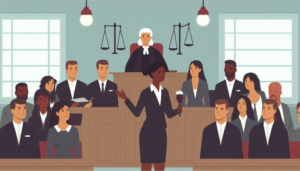
The realm of education has witnessed a surge in legal disputes, with presence learning, the traditional brick-and-mortar classroom model, at the center of several high-profile lawsuits. These legal battles raise critical questions about the rights of students, educators, and institutions, and their implications for the future of education.
A Closer Look at Presence Learning Lawsuits
Presence learning lawsuits encompass a broad spectrum of issues, ranging from discrimination and special education rights to school safety and teacher contracts. One notable case, Whitehead v. Presencelearning, Inc. et al., involves allegations of fraudulent inducement and unfair compensation practices. In another instance, PresenceLearning was ordered to pay Super Duper Publications $3.25 million in damages and attorneys’ fees for copyright and trademark infringement.
These lawsuits highlight the complexities and challenges inherent in presence learning. The traditional classroom setting, while providing a familiar and structured environment for many students, is not without its shortcomings. Issues of equity, accessibility, and individual student needs often come to the forefront in legal disputes.
Implications for the Future of Education
Presence learning lawsuits serve as a reminder of the ongoing need to refine and improve the educational experience for all students. As legal challenges continue to unfold, it is crucial for educators, administrators, and policymakers to stay informed and engage in thoughtful dialogue about the future of education.
The legal landscape surrounding presence learning is constantly evolving, with new cases emerging regularly. By understanding the nature of these lawsuits, their underlying issues, and their implications, we can foster a more equitable, inclusive, and effective educational system for all.
FAQs
What are the main types of presence learning lawsuits?
Presence learning lawsuits cover a wide range of issues, including discrimination, special education rights, school safety, and teacher contracts.
What are some of the challenges facing presence learning in light of legal challenges?
Presence learning must address issues of equity, accessibility, and individual student needs to mitigate potential legal disputes.
How can educators, administrators, and policymakers stay informed about presence learning lawsuits?
Regularly reviewing legal news and consulting with legal experts can help keep individuals abreast of developments.
What is the role of technology in presence learning and how does it impact legal issues?
Technology plays a growing role in presence learning, raising new legal questions regarding data privacy, intellectual property, and accessibility.
How can parents and guardians stay informed about legal issues affecting their children’s education?
Parents and guardians should engage with school administrators and legal professionals to understand their rights and options.
What are some of the potential benefits of resolving presence learning disputes through mediation or alternative dispute resolution (ADR)?
Mediation and ADR can offer more cost-effective and collaborative approaches to resolving disputes outside of the courtroom.
References
- Whitehead v. Presencelearning, Inc. et al.: https://www.law.com/radar/card/whitehead-v-presencelearning-inc-et-al-48798357-0/
- PresenceLearning Ordered to Pay Super Duper $3.25 Million in Copyright and Trademark Infringement Suit: https://thejournal.com/articles/2022/04/28/presencelearning-ordered-to-pay-super-duper-3m-in-copyright-and-trademark-infringement-suit.aspx






